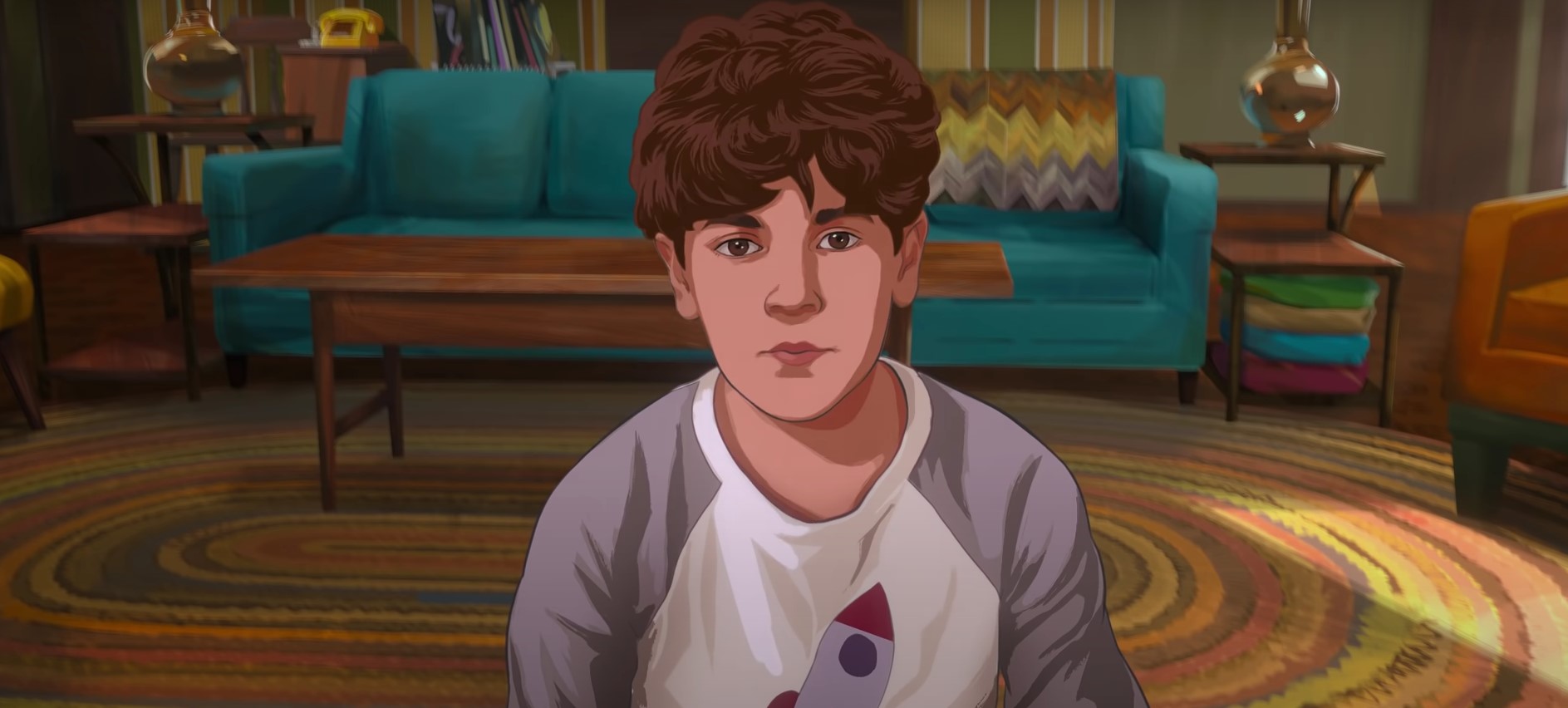Richard Linklater’s ‘Apollo 10½: A Space Age Childhood’ or ‘Apollo 10½’ is a coming-of-age period science-fiction animated movie that celebrates childhood, nostalgia, the moon landing, and the lazy life in Houston suburbia. The story takes place at the height of the space race as the Americans prepare for the Apollo 11 Mission. The protagonist, Stan or Stanley (Milo Coy), is a fourth-grader. He is growing up in one of the most important eras in human history at arguably the epicenter of scientific advancements.
Between helping his frugal father take plywood from the neighbors without telling them, traveling to Houston with his mother as she attends grad school, and using the family’s first push-button telephone as a musical instrument along with his siblings, Stan dreams of the Moon. He imagines himself being approached by NASA officials and asked to be the astronaut in the extremely covert Apollo 10½ Mission. ‘Apollo 10½: A Space Age Childhood’ is a gorgeous film. Every scene in it has been painstakingly developed to recreate a by-gone era. If you are wondering how Linklater and his team achieved this, we got you covered. SPOILERS AHEAD.
What Kind of Animation Was Used in the Making of Apollo 10½?
‘Apollo 10½: A Space Age Childhood’ is Linklater’s third animation film after ‘Waking Life’ and ‘A Scanner Darkly.’ Linklater’s initial plan was to develop ‘Apollo 10½’ as a live-action movie, but it wasn’t quite coming together in his head. He then considered the fantasy aspect of the film and was unsure how to approach it before realizing that animation could bring all of it together. Filming took place at Robert Rodriguez’s Troublemaker Studios in Austin, Texas, and was reportedly completed in March 2020. Linklater and his team spent the following two years in post-production, editing, and adding the animation.

Both ‘Waking Life’ and ‘A Scanner Darkly’ were developed using a technique known as rotoscoping. While rotoscope was used in ‘Apollo 10½’ as well, Linklater and animation director and co-producer Tommy Pallotta diversified the process. The movie was shot on a green screen, and then animation took over. According to Linklater, ‘Apollo 10½’ is a 2D animated film with some 3D and rotoscope elements. The production team even apparently started referring to it as “two-and-a-half D.” But the rotoscoping used for ‘Apollo 10½’ is significantly different from what he used for his previous projects. It is a minor aspect of the entire process.
Why Does Apollo 10½ Look So Realistic?

Linklater and his team knew they needed to create certain things for the film from scratch, including the AstroWorld, which didn’t exist any longer. There was also traveling to the Moon part. They used rotoscoping for the characters, but just for the outlines. The rest of the animation was done through traditional methods. As mentioned above, ‘Apollo 10½’ is predominantly a 2D movie with some 3D elements. They acquired home videos from people living in Houston in the 1960s and animated them. Moreover, they wanted the animation to have a playfulness to it, so they drew inspiration from Saturday morning cartoons.
Read More: Who Is the Narrator in Apollo 10½: A Space Age Childhood?

